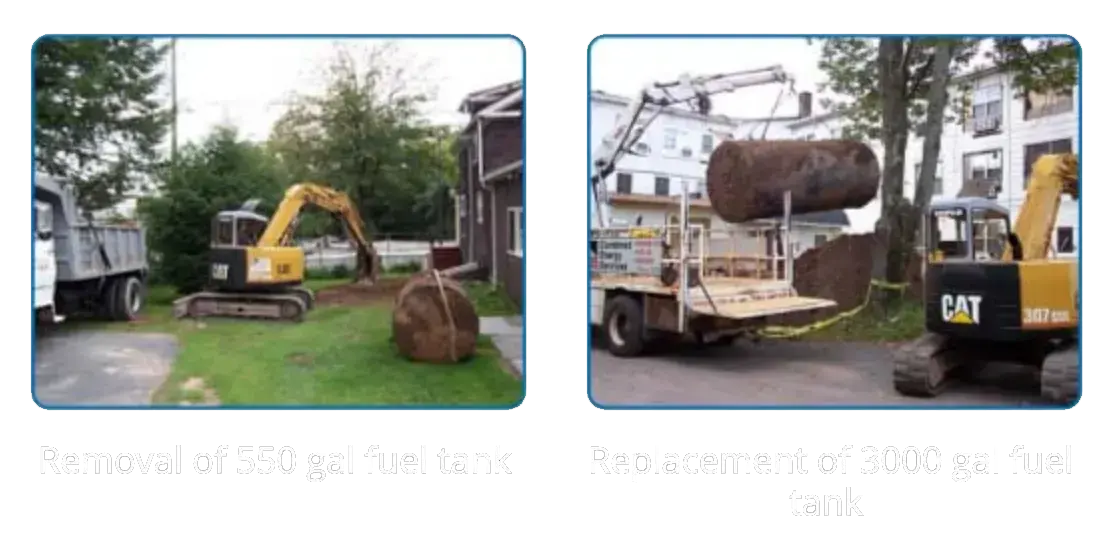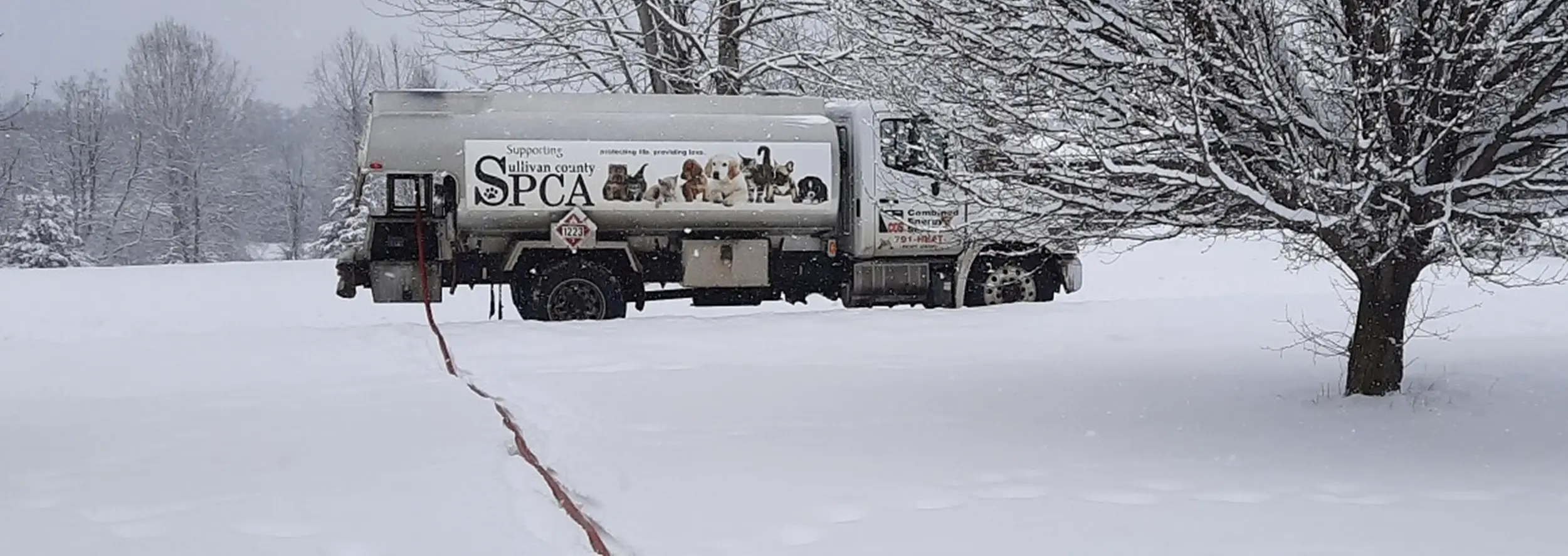Fuel Oil Tanks
CES Has Been Safely Installing Fuel Oil Tanks for Close to 50 Years
We make sure your fuel storage is safe, environmentally secure and hassle-free.
We are NOT an oil tank removal company or environmental remediation contractor. We are a propane & fuel oil supplier that is happy to help our CES customers deal with the huge liability that can be associated with oil tanks, oil tank removal or contaminated soil and water treatment & removal. *Not available in all service locations.
We are here to help our CES Customers make the tank removal process easy
BEFORE it becomes a problem!
Switch to Propane or Fuel Oil with CES and we will be happy to help!
Learn More About Oil Tanks
Oil Tank Types
There are different oil tanks on the market. There are plastic tanks, steel tanks, indoor tanks, outdoor tanks and underground tanks. You can choose between a single-layer, double layer or integrally bunded tanks. A bunded tank means one tank is sitting inside another, with the outside tank being 10% larger than the inner tank. We will provide you with the best industry knowledge to lead you to choose the correct type of tank for your needs.
Indoor Oil Tanks
Indoor fuel oil tanks are generally located in a utility room, basement or garage. The standard tank is 275 gallons,
but models are available ranging from 160 – 400 gallons. Indoor tanks are not exposed to the elements and do not
experience the same hazards as outdoor tanks. Fewer hazards mean less maintenance and improved performance.
In addition to the tank being exposed to the elements, fuel lines are also exposed allowing the possibility of frozen
lines.
When placing a tank indoors:
- Be sure the indoor oil tank is at least 5 feet away from any combustion appliance.
- The tank should be installed in a spot where it won’t be in the way of everyday activities, but still be easily
accessible. - Place the tank so it can be inspected on all sides without obstruction. Keep the recommended clearance distance
from any walls or other objects. - If the tank is in the garage, protect it from motor vehicles.
- Place a drip tray below any single-walled tanks, lines, fittings or filters. This will help contain any potential spills.
- Seal up any floor drains or conduits that remove water if they’re near the tank. This prevents spills from being
sent outside.
Outdoor Oil Tanks
Above Ground Tanks
Above ground fuel, oil storage tanks are the simplest, by far. They require the least amount of maintenance. And they are the most environmentally conscious choice when considering oil tanks. Today’s above ground tanks come in many shapes & sizes to fit every application and space within your home! Some choices CES Offers:
Inspection of Fuel Oil Above Ground Tanks
Tanks can leak due to improper installation or maintenance. This can adversely affect the environment and lead to costly cleanups for the homeowner and the state. To avoid expensive oil spills, install new heating oil tank systems in accordance with National Fire Protection Association Code Standard 31 and perform routine maintenance on both old and new tank systems.
CHECKLIST: The following checklist can aid you in proper maintenance of your home heating tank system. Ask the following questions and if the answer to any of them is “NO,” contact Combined Energy Services. (It is best to contact a certified professional to correct the problem. DO NOT attempt to correct problems yourself.)
- Are tank legs and foundation stable?
- Is the tank surface free of rust, weeps, or excessive denting?
- Is the area around the filter and valves free of drips or signs of leakage?
- Are the oil lines between the tank and the furnace enclosed in the protective tubing?
- Is the tank protected from falling snow or ice?
- Is the tank vent unclogged and free of ice, snow, corrosion, or insect nests?
- Does the tank system have a vent alarm and is it working properly? (Ask oil delivery person if the alarm whistles when full.)
- Are the areas around the fill pipe and vent pipe free of signs of spills?
- Are you using an average amount of oil for your system? (Using more oil than normal usually indicates a problem with your system.)
UNDERGROUND TANKS
With today’s growing concern about buried fuel storage tanks, the only underground fuel tanks that CES
recommends and sells are double wall, polyurethane jacketed tanks. While many plumbers and contractors look for
the quick, cheap installation – we never recommend nor would we sell a “plain” steel fuel storage tank for buried
service.
All steel in the ground will eventually deteriorate. It’s not a question of “if”, it’s a question of WHEN. Very often these
contractors are installing the cheapest tank they can buy, scratch the already too thin protective painted coating
and rarely provide electric potential isolation through the use of magnesium anode bags or dielectric unions on
piping connections. These short-sighted quick buck moves put YOU as the property owner at risk in the long term.
One leaking fuel storage tank can lead to tens of thousands of dollars in clean-up costs.
CES is a leader in environmentally conscious fuel tank installations using only the most advanced technology to
protect your property for years to come. When we install your buried fuel tank, you can rest easy knowing it’s been
done right and within environmental compliance regulations.
Indoor VS. Outdoor Tanks
When choosing fuel oil, you have the option of placing your tank indoors or outdoors. While the consumer can freely choose the location of their tank, experts say it’s better to have an indoor tank than an outdoor one. WHEN AT ALL POSSIBLE – THE TANK SHOULD BE INSTALLED INDOORS!
Why put the tank indoors?
- Outside tanks are subject to condensation inside the tank with changing temperatures putting water into your oil creating winter service problems & eventual corrosion inside your tank.
- Ice & water dripping from your roof can break oil lines coming from tanks.
- Outside tanks settle or may become unstable, creating an environmental risk.
- Outside tanks require the use anti-gel additives or a kerosene blend in the winter to keep home heating fuel oil from “gelling” in extremely cold temperatures.
Oil Tank Leaks
Tank Removal, Tank Replacement & Soil Remediation
If your buried fuel tank is over 20 years old, we highly recommend you consider having the tank removed from service before you have a problem. CES can handle the process from start to finish protecting you from serious environmental violations and costly clean-ups.

While CES doesn’t recommend the installation of underground tanks unless protected double walled, other tanks are acceptable if installed correctly. United States Environmental Protection Agency (USEPA) has a wealth of information on prevention of underground fuel storage tank leaks as well as regulations.
References: NYS Dept of Environmental Conservation (NYSDEC) Homeowner’s Guide to Underground Heating Oil Tanks
Switch to Propane And CES Will Remove Your Oil Tank For Free!
SWITCH TO PROPANE AND CES WILL REMOVE YOUR OIL TANK FOR FREE!
We are here to make the tank removal process easy BEFORE you have a problem. Switch to propane with CES
and we will remove your underground fuel oil tank for FREE! If you’re considering replacing your underground
fuel oil tank with an above ground tank or converting to propane, CES will send a salesman out to scope out the
location:
- Where the tank is located
- How much fuel oil is left inside
- Is there any landscaping to consider
- Are there any underground lines to worry about
From there we will offer solutions:
- The cost and/or location for a new fuel oil tank.
- Quote and options on converting to clean, efficient propane gas heating – and the location of your new
propane gas tank (whether it be underground or aboveground).

